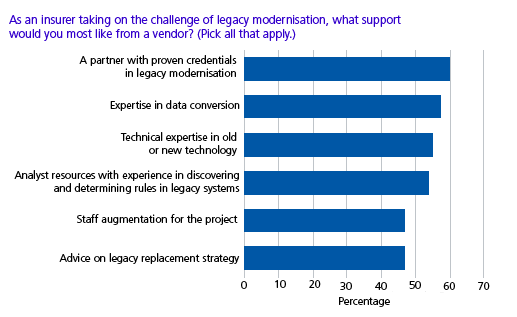Still Seeing the Shadow: Groundhog Day for Legacy Modernisation (P&C Edition)
Abstract
Insurers are tackling the challenge of legacy systems head on. Almost half of P&C insurers report that they are well under way in their modernisation projects.
Legacy IT is an intrinsic part of any established insurer, and because this legacy is placing constraints on business flexibility, the imperative of addressing it comes as no surprise. In a new report, Still Seeing the Shadow: Groundhog Day for Legacy Modernisation (P&C Edition), Celent provides an updated view on P&C insurers’ progress in updating their infrastructure and systems.
It is imperative that the legacy problem is addressed. How this is done depends on the IT environment, business pain points, and the company’s appetite for risk. The maturity of SOA and modern PAS solutions make it more possible than ever to tackle the challenge of legacy. With careful deign and planning, insurers can avoid creating the next generation of legacy.

“Although insurers are well into this journey of modernisation, there is still a need for partnership for the final push in execution,” says Catherine Stagg-Macey, Senior Vice President with Celent's Insurance Group and author of the report. “Particularly, insurers place value on partners with proven credentials in legacy modernisation and data conversion. These requirements reflect the progress most projects have made and the pain points they now experience in delivery.”
This report looks at the impact of legacy and how it can be measured. It goes on to discuss progress to date and provides an overview of emerging strategies and operational considerations being employed by insurers. The report concludes with some thoughts on tackling this problem.

